Design and virtually furnish a room using IKEA Place
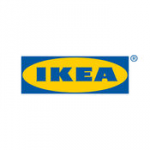
Do you wince when your partner suggests you head to IKEA on a Sunday morning? Everyone seems to have decided that IKEA is their goto store for furnishing a room and it can be bedlam at a weekend. And that’s if you can get into the car park.
Luckily Apple has made the task a lot easier by adding augmented reality to iOS 11. Simply put, the new feature enables a person to move around objects within a virtual environment.
ASUS details Windows Mixed Reality Headset
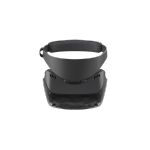
Dell revealed more information about its first Windows Mixed Reality headset yesterday, and now it is ASUS' turn to do the same. The company, which is among the first supporters of the platform, chose IFA 2017 to talk about price and expands on the specs that it has.
The Windows Mixed Reality Headset (yes, that's its actual name), which we first read about back in late-May, has a pretty cool design, featuring "hundreds of 3D polygons and a glossy tone-on-tone effect."
Dell unveils its first Windows Mixed Reality headset
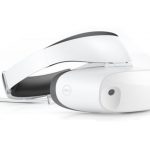
Windows Mixed Reality headsets are coming, and Dell is among the first of Microsoft's partners to showcase its entry in this market. Called the Visor, it's said to feature the same technology that's found in the software giant's HoloLens, but at a fraction of the cost.
Dell says that the Visor will be available in a few months in the US for $349.99, which is $2650.01 less than what you can expect to pay for the Development Edition of HoloLens today. Let's take a closer look at it.
RED Hydrogen One is a super expensive holographic smartphone
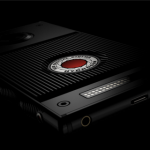
It is tough to get excited about a new smartphone these days, but RED's new Hydrogen One might just pique your interest. What makes it so special? It features a novel display that uses nanotechnology to deliver a holographic experience.
In RED's own words, the Hydrogen One's "retina-riveting display features nanotechnology that seamlessly switches between traditional 2D content, holographic multi-view content, 3D content, and interactive games." That headline feature is so important that RED hasn't actually bothered to say much about what other specs the Hydrogen One has. Oh, and, no glasses are needed.
ASUS ZenFone AR Android smartphone with Tango and Daydream is a Verizon exclusive
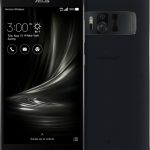
Both augmented and virtual reality show no sign of slowing down -- these are certainly technologies to keep an eye on over the next several years. Microsoft and Google have been very public with their projects, while there are rumors that Apple is secretly working on both AR and VR too.
Google's Tango is one of the most ambitious such projects, bringing augmented reality capabilities to Android devices. Earlier today at Google I/O, ASUS announced that the upcoming ZenFone AR smartphone -- compatible with both Tango and Daydream -- will be a Verizon exclusive.
Watch today's Google I/O developers conference keynote here, live

Google revealed a lot of new features and products during yesterday’s opening two-hour long I/O keynote, including more about Android O, a stripped down OS for cheap phones called Android Go, an improved way to protect users from bad Android apps, and competition for Siri in the form of Google Assistant for iOS.
That’s not the end of things though, as Google has another keynote today.
Microsoft renames Windows Holographic to Windows Mixed Reality as dev kits start to ship
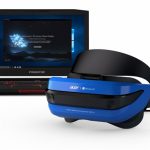
It seems like a little while since we heard anything about Windows Holographic, and that's not something that's going to change any time soon. Microsoft is not killing off the project (and HoloLens lives on), but has revealed that it is now going under a new, more descriptive name: Windows Mixed Reality.
The company says that the change of name is a reflection of the fact that there is a broader vision for the platform. It also helps to convey the idea of virtual-reality-meets-augmented-reality that Windows Holographic/Windows Mixed Reality represents. Microsoft also says that the Acer Windows Mixed Reality Development Edition headset is on the verge of shipping.
Microsoft admits sales of 'expensive' HoloLens are 'not huge' but more versions are planned

Microsoft is not giving away too much about the sales figures for HoloLens but goes as far as saying it is "in thousands, not hundreds of thousands". With the augmented reality headset costing $3000, this is perhaps not surprising, and the company is quite happy to take the seemingly low sales figures in its stride.
Speaking at educational technology event the Bett Show in London on Thursday, Roger Walkden, Senior Director and Commercial Lead of HoloLens, acknowledged that the price tag was partly responsible for the small number of sales. Interestingly, though, Microsoft is not bothered by what could be seen as disappointing sales, despite the fact that the company seems to be betting big on HoloLens by adding headset settings in recent Windows 10 Insider builds.
Google enhances museum experience with augmented reality using Tango smartphone

Augmented reality has a big future in consumer electronics. While much of the hardware -- such as Google's Tango and Microsoft's HoloLens -- are not yet ready for the mainstream, we are slowly getting there.
Today, Google announces that it is enhancing the museum-going experience with its Tango technology by way of the Lenovo Phab 2 Pro Android smartphone. Attendees can request one of the devices before touring the Detroit Institute of Arts, allowing them to interact with some of the exhibits in exciting new ways.
UK businesses are not keen to embrace AR

Businesses are reluctant to accept augmented reality, a new survey by ISACA has shown. The main reasons for this reserved stance is that they don’t believe the benefits are bigger than the risks of implementing the new technology.
The findings were published in ISACA’s new report, entitled IT Risk/Reward Barometer, which polled 363 UK professionals. Less than a fifth (18 percent) currently believe the benefits of AR are bigger than the risks, and 40 percent say that both organizations and consumers should be "very concerned" about the privacy risks that go with the implementation of augmented reality tech.
What does Pokémon Go reveal about the future of Augmented Reality?

The lifecycles of breakthrough technologies such as augmented reality (AR) are heavily reliant on mainstream take up. Many believed AR would initially be used by architects to visualize buildings and design companies for 3D graphic imagery. Yet its first major adoption saw more than 100 million people take to the streets to hunt Pokémon.
Evolving from a simple, location-based AR game into a cultural phenomenon, Pokémon Go was the most successful app launch of 2016. Approximately one in five 14-24 year olds installed Pokémon Go and it has been credited as the most successful mobile game launch in history. It captured the imagination of a new generation of game players by combining location awareness, exploration and much loved cartoon characters in a global treasure hunt.
Facebook adds augmented reality Halloween masks to Live video plus spooky reactions

Out on the streets people may be keeping an eye open for killer clowns, but on Facebook this Halloween things are also taking a frightening turn. The social network is using this spooky time of year to introduce augmented reality masks to Live video -- with a Halloween twist, of course.
At the same time, Facebook is also adding "limited-edition" Halloween reactions. These transform the now familiar Like, Love, Haha, Wow, Sad and Angry reactions in something rather more ghoulish.
Say, what's going on at Intel Capital Global Summit 2016?

San Diego, Calif. As a general rule I never connect to public WiFi networks, which is fine except when attending an event at a hotel ballroom where T-Mobile cellular is like an apparition dancing around a Halloween grave. So as Wendell Brooks, CEO of Intel Capital, begins his speech, I sit typing narrative offline rather than tweeting live. There’s irony, I suppose, reporting old style, about investments in new innovations.
Welcome to the trials and travails of the Intel Capital Global Summit, which kicks off today and goes through October 26. Looking at the lineup, I expect to hear about newfangled tech that would make news reporting so much easier if available—although 4G cellular data would be good enough for today.
What you need to know about martech
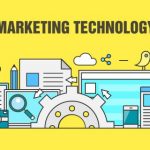
We’ve already covered fintech, and now it’s time to have a look at another technology portmanteau: martech. Short for marketing technology, it refers to innovative new approaches to campaigns and other marketing tactics, driven by software and hardware developments.
It is an area that is experiencing rapid growth, with worldwide martech spending expected to reach $32 billion by 2018, up from $22.6 billion in 2015. Because many of the tools behind the growth of martech are relatively new, such as customer relationship management software and big data analytics, they are generating both opportunities and challenges for many marketers. The test facing businesses is whether they can remain agile enough to harness these new martech solutions to gain a competitive edge.
Microsoft HoloLens coming to Australia, France, Germany, Ireland, New Zealand, and UK
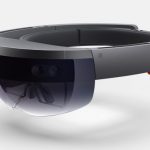
While virtual reality can transport a user into a different "world", augmented reality enhances the actual world. In other words, AR arguably has more potential than VR. Quite frankly, actual reality is pretty great already -- do we really need to be transported to a different virtual reality? Our time on the Earth is short -- who has time for make-believe? AR could one day improve our everyday lives.
One of the more intriguing augmented reality solutions comes from Microsoft. Its HoloLens device has sparked the imaginations of many, getting developers -- including NASA -- excited. Unfortunately, the device has not been available to all regions -- it was limited to the USA and Canada. Today this changes, as Microsoft announces that it will be delivering HoloLens to more countries, such as Australia, France, Germany, Ireland, New Zealand, and UK.
Recent Headlines
Most Commented Stories
© 1998-2025 BetaNews, Inc. All Rights Reserved. About Us - Privacy Policy - Cookie Policy - Sitemap.